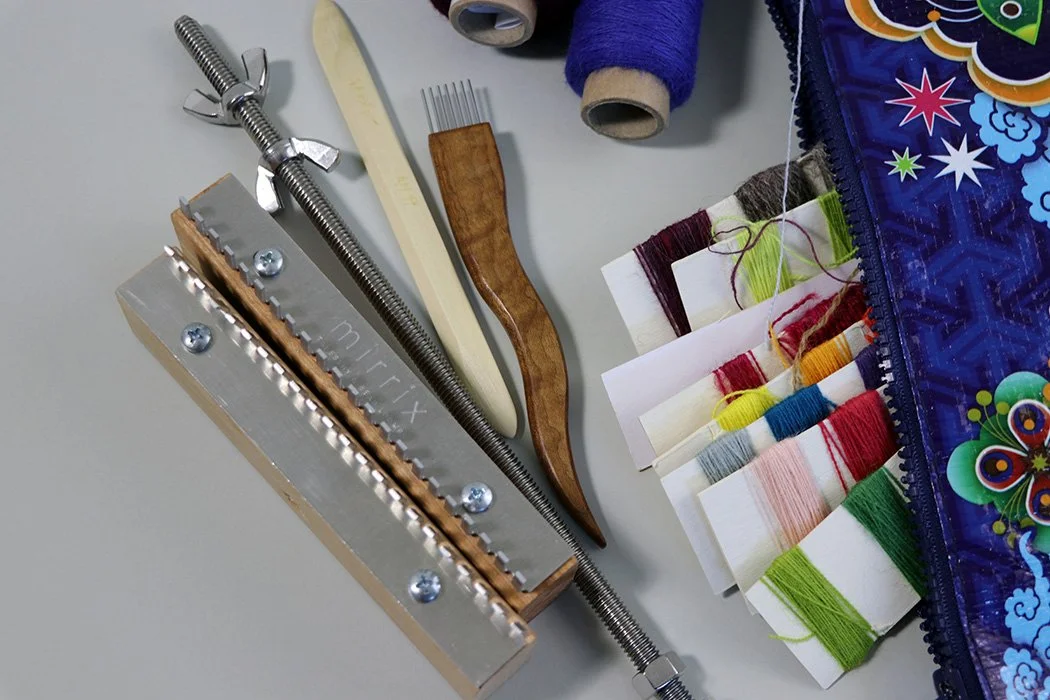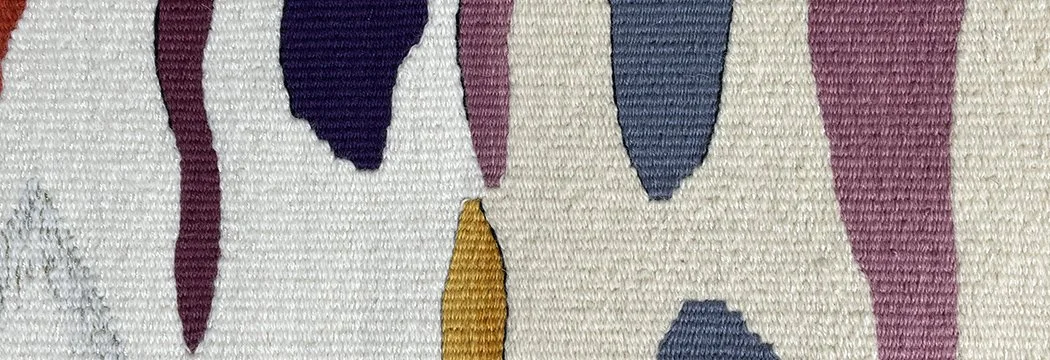Learning a new art or craft can mean that you need to purchase some supplies. The hard thing is knowing what you actually need when there are so many options. Below is a list of equipment and yarns which I’ve seen be very successfully used by beginning tapestry weavers. Some people will use the same materials for their whole weaving career!
Fyber Monday! My once-a-year sale
The Monday after Thanksgiving weekend in the USA has long been deemed “Cyber Monday.” It is a day for businesses to sell digital products. Though I care not for holiday hype, I do want to offer at least one opportunity during the holidays for people to purchase my online courses at a discount. I’ve dubbed this day Fyber Monday and all my courses are on sale.
November 29, 2021
All courses are 15% off (and yes, you can purchase more than one with the discount) with the code ExploreFyber21
For an additional bonus, Fringeless: Four-selvedge warping with Sarah C. Swett (and produced by yours truly) is 25% off with the discount code Selvedge21
The surface of your tapestry: do those bumps matter?
What materials you use for your tapestry will, to some extent, determine how much surface variation there is in your tapestry. I’m talking about the bumps you see when the strands of weft don’t quite line up.
If you use a worsted spun wool that is fairly smooth like weaversbazaar or Gist Yarn’s Array, you’ll find that you have slight variations in the surface unless you spend a lot of time lining up the yarns in your weft bundle. I’d like to suggest that these slight surface differences are just part of this medium. One of the joys of seeing tapestry in person is that you can experience these surface details and they add to the piece in most instances.
For example, I’ve been sampling Gist Array’s yarn versus my regular Harrisville Singles for a large tapestry. The background colors in the sample are wool and silk (unbleached and white in these photos). The colored bits are the yarns I’m deciding between.
How much of your tapestry warp is useable?
For many of us, not wasting things is important. When it comes to weaving and warp however, there will always be some warp you can’t use. How much is that?
The answer of course depends on the loom and your tolerance for easy versus not-so-easy weaving. As I discussed here on the blog a few months ago, the longer the loom is, the easier the weaving is. But it is possible to weave all the way to the end of a warp where you have no shed at all. If you’re willing to do that, you’ll get the award for most warp used.
I prefer to have some loom waste and have an easier time weaving. All forms of weaving except for four-selvedge methods involve some loom waste. The video below discusses how much extra warp you need to leave on a continuously warped loom such as the Mirrix or Arras. This concept will help you decide on loom size and warp length as you set up your next tapestry weaving.
The Art of Tapestry Weaving: a whole year!
My book, The Art of Tapestry Weaving, was published a year ago this week. It was a labor of love and I’m pleased at how well-received it has been all over the world.
This week I stopped by my local library and found a copy on the shelves. This was rather thrilling since every time I stop at the bookstore, they don’t have it. I am choosing to believe it has been sold and they buy another and it has been sold and they buy another and it has been sold...
A new beginners tapestry course, a loom/yarn kit, and a holiday beginners bundle!
Before my Colorado Trail hike I made a new tapestry course which has just gone live. For years many of you have been asking for an intro course that is less of a commitment than Warp and Weft. This course leads into Warp and Weft but it is also a stand-alone class that can help you figure out if you want to do more tapestry weaving. I am also collaborating with Gist Yarn in their roll-out of their new tapestry yarn, Array. They are offering a kit that includes my course.
And finally if you know someone who wants to dive into tapestry, I’m offering a beginners bundle for the holidays that includes a signed copy of my book, The Art of Tapestry Weaving and the Introduction to Tapestry Course along with a bonus. All the details are in this post.
Sampling for a new large-format tapestry
When I sample for a large tapestry as I’m doing now, I usually take the full-size cartoon and weave a portion of it at the size it’ll be woven in the tapestry. The sample isn’t a tiny version of the large piece but a piece of the whole woven as it would be in the final tapestry (potentially). In reality, I often ask more questions as I weave a sample so I try out different things as I weave along and the sample does not look like a chunk of the final tapestry but a collection of possibilities.







